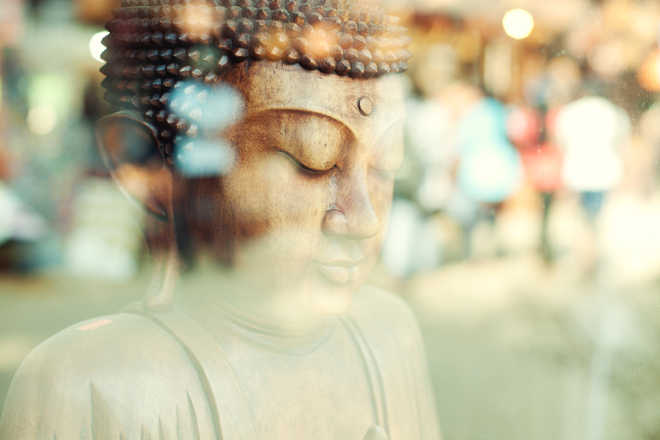Dr Satish K Kapoor
The material world is made up of five great elements (pancha mahabhuta) namely, earth, water, fire, air, space and ether. So are pancha tanmatras, namely shabda, sparsha, rupa, rasa and gandha, corresponding respectively to ether, air, fire, water and earth. Human body has five sense organs (panca–jnanendriya ) and five motor organs (pancha-karmendriya). There are five sheaths in the subtle human body (sukshma sharira) — annamaya, pranamaya, manomaya, vijnanamaya and anandamaya — the physical, vital, mental, intellectual, and the blissful. Time calculation is made by panchanga, almanac, which has five limbs.
Knowledge is of five kinds: tattva – cosmology; muktiprada which gives liberation; bhakti prada that confers devotion; yaugika which unites one with the Divine and vaishayika which is related to the objects of desire. In the Vedic tradition, an individual is expected to discharge five debts (pancha-rina) through five obligatory duties (pancha-mahayajna) – to god (deva-rina) by performing prescribed sacrifices, to sages (rishi-rina), by imbibing supreme knowledge, to father and ancestors (pitri- rina) by expiating rites, to Brahmins (brahma-rina) by gifts, and to men (nri- rina) by offering hospitality. In Brihadaranyaka Upanishad, Panchajana implies five kinds of beings – gods, humans, animals, birds and manes.
Initiation into Shiva, Shakti, Vishnu, Surya and Ganesha cults is called Panchayatani diksha. Five groups of worshippers are called panchopasakas. Panchayatani puja is worship of five deities associated with five elemental forces. Ganapati is associated with earth, Shiva with water, Devi with fire, Surya with air and Vishnu with ether. Panchopachara is the worship of deities with five objects — gandha (sandalpaste), pushpa (flowers), dhupa (incense), dipa (lighted lamp) and naivedya (food items). The Pancharatra doctrine speaks of five aspects of Purushottama, the supreme lord, namely, para - highest, vyuha - emanation, vibhava - incarnation, antrayamin - indweller and archa - form for worship.
A Vaishnava is expected to adopt five tapta-mudra, purificatory sacraments - branding one’s arms with marks of shankha and chakra, conch and discus, application of pundra - one u line in white clay with a red line of vermillion or turmeric powder in between - on the forehead; getting nama-spiritual name; receiving mantra-initiation and to perform yaga-holy deeds.
One of the names of Shiva is Panchanana, god with five faces, namely – Ishana, Tatpurusha, Aghora, Vamadeva and Sadyojata. Shiva enjoys five-fold powers of chit-shakti luminosity, ananda-shakti, absolute bliss, ichha-shakti), irresistible will, jnana-shakti, supreme knowledge, and kriya-shakti, power of action. Namah Shivaya - mantra in Shaivism has five syllables.
Ancient Shivalinga shrines are associated with five primordial elements: Kanchipuram (Tamil Nadu) to earth (Prithvilinga), Jambukeshwar (Tamil Nadu) to water (Ablinga), Arunacala (in Tamil Nadu) to fire (Tejolinga), Kalahasti (Andhra Pradesh) to air (Vayulinga) and Chidambaram (Tamil Nadu) to space (Akasha linga). Virashaivism has panchachara or five rules of conduct: lingachara, worship of linga, sadachara; observance of morality; shivachara, emulating Shiva’s qualities; bhrityachara, caring for world creatures and ganachara, living as per community rules. The pontifical seats of Virashaivism are also five, situated at Kedaranatha (Uttaranchal), Srishailam (Andhra Pradesh), Balehonnuru and Ujjayani (Karnataka) and Varanasi (Uttar Pradesh).
Shakti, the kinetic aspect of Shiva, is called Panchabrahma Swarupini. She is involved in panchakriya, five actions - srishti, creation, sthiti, preservation, samhara, destruction, tirodhana, disappearance, and anugraha, favour. The common man is ordained to visualize Shakti in at least five relations - mother, sister, daughter, daughter-in-law and guru’s wife. Works on Tantra speak of panchamakara - madya, wine, mamsa, meat, matsya, fish, mudra, posture, and maithuna, copulation.
In Yoga - psychology, pancha klesha are the five fetters which obstruct spiritual growth, namely, avidya, false knowledge, asmita, egotism, raga, attachment, dvesha, hatred, and abhinivesha, adherence. The antidote is panchanga - shuddhi or five-fold purification of atma, soul, sthana, place, mantra, sacred syllables, dravya, offerings and deva, deity.
While performing khande di pahul, initiatory rites of the Khalsa, Guru Gobind Singh mixed five sweetening agents in water, chanted five banis. He made it obligatory for a Sikh to wear five K’s – kasha, long hair, kangha, comb, kara, steel bracelet, kaccha, short drawers, and kirpan, sword.
Jainism lays stress on five anuvratas – ahimsa (non-violence), satya (truth), asteya (non-stealing), brahmacharya (chastity) and aparigraha (limitation of possessions). Obeisance is made to five categories of people: arihants, siddha-s, acharya-s, upadhyaya-s, and to all holy men.
In Buddhism, the human mind is said to be clouded by five vices - greed, anger, foolishness, arrogance and doubt, which can be controlled by five meditations. Enlightenment is achieved by faith, right effort, right memory, meditation and wisdom.
(Dr Satish K Kapoor is a former British Council Scholar)
Unlock Exclusive Insights with The Tribune Premium
Take your experience further with Premium access.
Thought-provoking Opinions, Expert Analysis, In-depth Insights and other Member Only Benefits
Already a Member? Sign In Now










